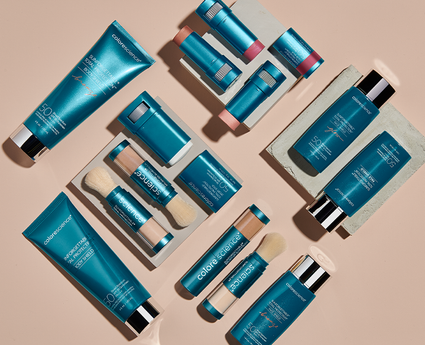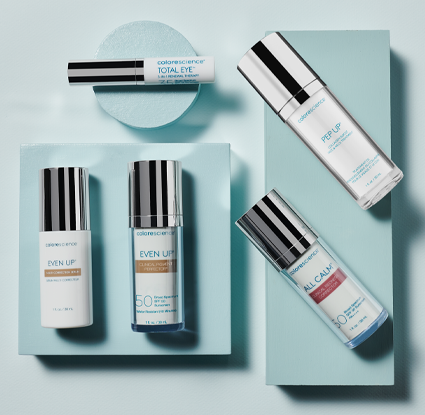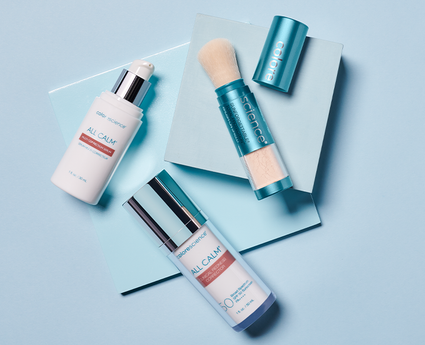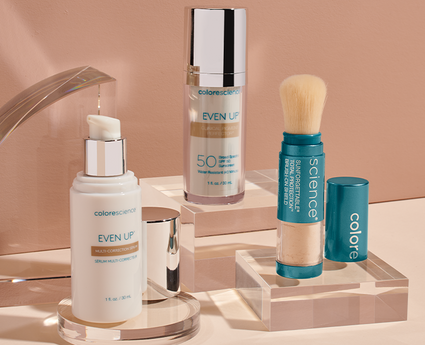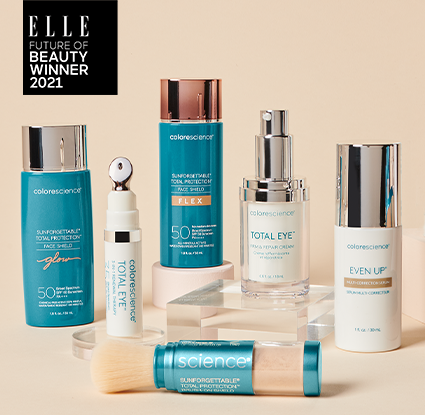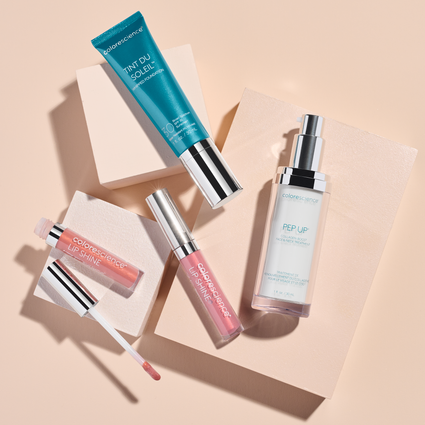What Sunscreen Is Safe to Use? 14 Sunscreen Ingredients to Potentially Avoid
Sunscreen is essential for protecting you against sun exposure. While it’s always best to wear sunscreen of any kind, the truth of the matter is that not all formulas are created the same.
Keep reading to learn more about what sunscreen is safe and which ingredients you may want to avoid. If you have a direct question, jump ahead using the links below or read through end-to-end to ensure you don’t miss any details.
- Is sunscreen safe?
- What are the sunscreen ingredients to consider avoiding?
- What’s the difference between chemical and mineral sunscreen?
- What are the healthiest sunscreen ingredients?
- What sunscreen should you avoid?
- What is the best sunscreen without harmful ingredients?
- How to safely protect your skin
- Find your favorite new sunscreen formula
IS SUNSCREEN SAFE?
Generally speaking, yes, sunscreen is a protective measure everyone should use. You need UV protection every day to prevent you from getting burned and experiencing the side effects of sun damage.
However, there are a number of ingredients—including oxybenzone, octinoxate, homosalate, octisalate, octocrylene, and avobenzone—commonly found in big-name formulas that you might want to think twice about before applying it to your skin.
WHAT ARE THE SUNSCREEN INGREDIENTS TO CONSIDER AVOIDING?
Consumers are tasked with navigating through the many options to find the best sunscreen to suit their needs.
Unfortunately, the Food and Drug Administration (FDA) has been slow to modernize standards for safe sunscreen. However, there may be hope; in 2019, the FDA proposed a new regulation to verify that sunscreens are safe and effective.
In 2021, they issued a proposed revised order to update the GRASE (generally recognized as safe and effective) status for 16 ingredients, broad-spectrum requirements.
For now, though, you’ll need to read the labels on every product you pick up to see what ingredients it contains and whether they’re something you’re comfortable using on your body.
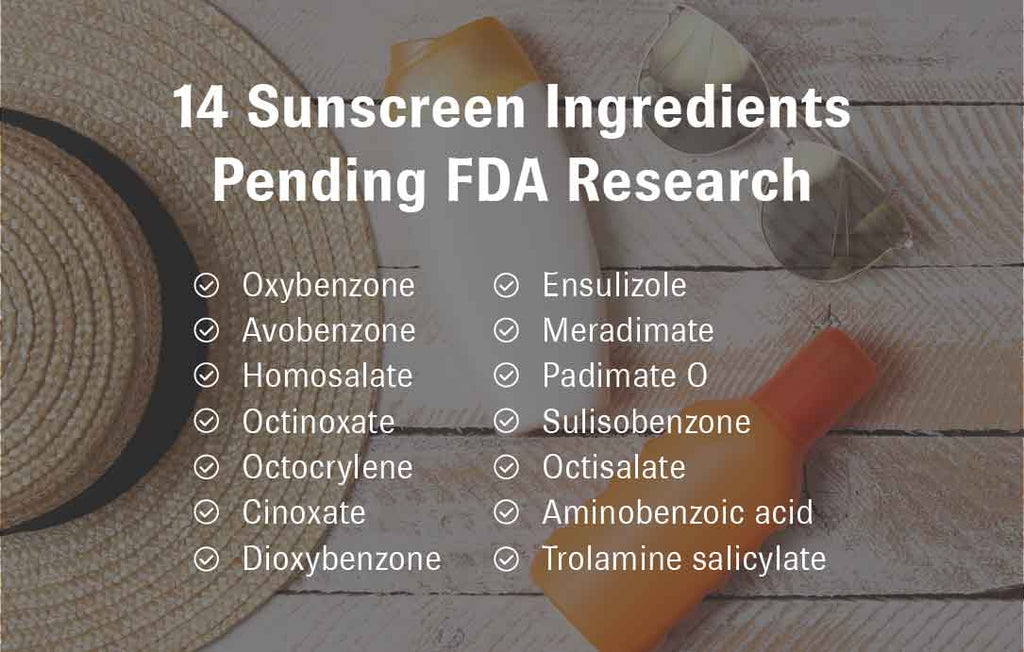
Sunscreen Ingredients You May Want to Avoid
The FDA proposes that 14 ingredients commonly found in sunscreen need additional data from safety and efficacy testing. Chemicals to be aware of that might be in sunscreen include:
- Oxybenzone
- Avobenzone
- Homosalate
- Octinoxate
- Octocrylene
- Cinoxate
- Dioxybenzone
- Ensulizole
- Meradimate
- Padimate O
- Sulisobenzone
- Octisalate
- Aminobenzoic acid
- Trolamine salicylate
You might want to avoid these ingredients in order to minimize potential health risks. Consider switching to all-mineral active sunscreen instead.
We’ll dive deeper into the 14 ingredients mentioned above and discuss some of the possible concerns associated with them.
Oxybenzone
Oxybenzone is generally the most common ingredient found in sunscreens.
Oxybenzone has the potential to be a problem because it’s readily absorbed by the skin, enters the bloodstream, and circulates throughout the body, which could negatively affect several bodily systems. Additionally, when it sheds off our skin and makes its way into the water, it can cause harm to the environment.
Here are some facts about oxybenzone that you may want to consider when sunscreen shopping:
- The chemical is also present in breast tissues and breast milk and may induce pro-carcinogenic activities by facilitating the proliferation of cells that are receptive to estrogenic compounds.
- Oxybenzone has been linked to endocrine disruption and could affect hormones by blocking them or mimicking them, throwing off the body’s hormonal balance.
- It may cause allergic skin reactions.
- Hawaii has recently passed legislation that bans chemical sunscreen containing oxybenzone due to the widespread, tragic coral reef bleaching and fish mortality the chemical has contributed to.
- Just one drop of oxybenzone in a six-and-half Olympic-sized pool of water is enough to damage coral reefs.
To recap, you may want to avoid sunscreens with oxybenzone because once it’s absorbed through the skin, it may be linked to hormonal imbalance, reproductive harm, skin reactions, or photoallergies.
On top of that, when it washes off our bodies and travels into water, it could cause harm to delicate ecosystems.
Octinoxate
Octinoxate is a UV filter that can be absorbed into the skin. This chemical is included with oxybenzone as a UV filler. However, there are concerns about potential health risks.
You can review the concerns that are outlined here to determine whether you want to continue using products with octinoxate.
Avobenzone
Avobenzone is typically found in a variety of chemical sunscreens, including lip balms with SPF and baby sunscreen. However, despite how common this ingredient is, it may not be very effective on its own. In fact, sunlight can cause it to break down if it doesn’t have another chemical to stabilize it, which can make it easier for the sun’s rays to penetrate your skin.
Homosalate
Homosalate is a chemical commonly found in sunscreens and several products containing SPF because it can absorb ultraviolet (UV) rays, effectively preventing them from reaching your skin.
However, in June 2021, the European Commission released a statement regarding limiting homosalate, recommending that only 1.4% be used in sun-blocking cosmetics. Currently, the FDA allows a Homosalate concentration of 15%.
For more information about this recommendation, read what the European Commission has to say on the matter.
Octocrylene
Octocrylene is a sunscreen additive often used in combination with avobenzone to neutralize the sun’s UV rays. However, octocrylene can also break down, causing it to develop into a harmful chemical known as benzophenone.
According to Yale Medicine, approximately 2,400 sunscreen products have octocrylene in them. Learn more about what they have to say about the potential risks associated with this ingredient.
Cinoxate
Cinoxate prevents the breakdown of other unstable chemicals in sunscreen while also absorbing potent UV rays. However, the FDA has proposed a not GRASE status for cinoxate.
Dioxybenzone
Dioxybenzone, or Benzophenone-8, keeps sun care cosmetics from deteriorating by absorbing UV rays. According to one study, dioxybenzone could potentially disrupt endocrine production.

Ensulizole
When the chemical ensulizole makes direct contact with sunlight, it can produce something known as free radicals, which are highly reactive molecules that steal the electrons of nearby cells.
Meradimate
Meradimate (methyl anthranilate) is one of the chemicals under FDA review and is currently banned from being used in Japan and Europe. In 2021, the Scientific Committee on Consumer Safety (SCCS) suggested that it should not be used in sunscreen products.
Additionally, meradimate has been found to be a weak UVA blocker and doesn’t block UVB rays.
Padimate O
Padimate O is a byproduct of para-aminobenzoic acid (PABA)—a once-common sunscreen ingredient that can be poisonous in large amounts and is no longer in use because of allergic dermatitis and photosensitivity issues.
Learn more about why the use restrictions are recommended.
Sulisobenzone
Sulisobenzone (benzophenone-4) is a sunscreen ingredient that can cause irritation in both the skin and eyes and may potentially disrupt endocrine production. While sulisobenzone doesn’t get absorbed into the skin as much as other compounds do, it can cause other chemicals to penetrate your skin more deeply.
Octisalate
Octisalate is a common sunscreen ingredient used to stabilize avobenzone. The FDA has proposed not GRASE status for sunscreens containing octisalate because of “inadequate data to support a safety finding.”
Aminobenzoic acid
Aminobenzoic acid used to be commonly used in sunscreen; however, the FDA has proposed an order to establish not GRASE status for sunscreens containing this ingredient because of “data showing safety issues”.
Trolamine salicylate
Trolamine salicylate has been used in sunscreen due to its ability to absorb UV light. However, the FDA has proposed an order to establish not GRASE status for sunscreens, including this ingredient, because of “data showing safety issues.”
While the list above can be a bit intimidating, that doesn’t mean you should panic. The first step to finding the right sunscreen for you is recognizing which sunscreen actives you’d prefer to avoid.
When considering which sunscreen ingredients to avoid, it’s also important to note that risks may vary in severity depending on usage. Additionally, some of these ingredients require more research on their safety and efficacy, which is one of the reasons they may be under review.
You can learn more about these ingredients and the potential health risks that may be associated with them by reviewing the concerns highlighted by the FDA.

WHAT’S THE DIFFERENCE BETWEEN CHEMICAL AND MINERAL SUNSCREEN?
What sunscreen you choose to use is up to you. Using any sunscreen and making sure you’re protected from UV rays is better than going without. However, if you want to make an informed decision when purchasing sunscreen, here’s what you should know about the differences between chemical and mineral sunscreen.
When comparing mineral vs. chemical sunscreen, you want to consider how they interact with your skin and what they’re made from.
It is commonly understood that chemical sunscreen works like a sponge; the active ingredients are absorbed by the skin, which then convert UV rays to heat. Mineral sunscreen is understood to also work like a shield; the active ingredients sit on top of the skin and refract the sun’s UV rays (which is why they are also called physical sunscreens).
Mineral sunscreens generally have two primary active ingredients: zinc oxide and titanium dioxide. The FDA has proposed GRASE status for sunscreens containing only these active ingredients.
On the other hand, chemical formulas include a variety of chemical ingredients which can penetrate your skin. In general, there is concern that certain chemical formulas may pose health and environmental concerns.
As we mentioned above, concerns have been raised over the years regarding some of these chemicals, and the FDA has proposed not GRASE for sunscreens containing many of these ingredients.
In particular, chemical spray formulas are not recommended for the following reasons:
1. Spray application is less effective than lotion, potentially resulting in missed spots and sunburns.2. When you spray chemical sunscreen, you may risk inhaling toxins and polluting the environment.
3. Many chemical sunscreens contain flammable ingredients, such as alcohol, and the FDA advises consumers to stay away from open flames if used, even after the initial application.
WHAT ARE THE HEALTHIEST SUNSCREEN INGREDIENTS?
Protecting yourself from the sun is imperative, but you might want to consider the potential risk of exposing yourself to certain active ingredients.
Shop all-mineral SPF from Colorescience, made only with all-mineral sunscreen actives that you can feel good about using.
The active ingredients found in our mineral sunscreens are derived from two naturally occurring minerals: zinc oxide and titanium dioxide.
- Zinc Oxide – As a naturally reflective material, zinc oxide sunscreen is one of the most effective sun protectors available. It does an excellent job of blocking out both short and long UVA and UVB rays. Its antimicrobial properties also help heal wounds more quickly, so it’s incredibly safe to apply to your skin.
- Titanium Dioxide – This mineral is non-comedogenic and very gentle on sensitive skin. Titanium dioxide sunscreen does a better job at blocking short-wave UVA and UVB rays, so it’s a great choice for casual, daily sun exposure.
Colorescience also offers a number of skincare treatments and mineral cosmetics packed with all-mineral sunscreen ingredients, which makes it effortless to protect your delicate complexion, prevent the signs of aging, and look radiant every day.
WHAT SUNSCREEN SHOULD YOU AVOID?
When it comes to deciding which sunscreens to avoid, you’ll want to do your research on the ingredients above and decide whether you’re comfortable using them.
As mentioned earlier, there are many sunscreens that contain ingredients that can potentially harm your health.
There are sunscreens on the market that may contain one or more ingredients pending FDA research as an active ingredient in their formulas. According to the FDA, active ingredients are components that are proactively working to prevent diseases. In the case of chemical sunscreens, active ingredients are trying to minimize the likelihood of sun-related health problems.
If you see the chemicals mentioned above listed as an active ingredient, you might want to consider other options. Of course, it’s important to mention that any sunscreen is always better than no sunscreen.
Which Sunscreen Ingredients Are Bad for the Environment?
Not only can chemical sunscreen ingredients negatively impact your health, but they can also harm the aquatic ecosystem of our oceans. According to Consumer Reports, common sunscreen chemicals—including oxybenzone and octinoxate—are harmful to coral reefs, fish, shrimp, and sea urchins. Currently, Hawaii and Florida have passed legislation to prevent brands from selling sunscreen with oxybenzone and octinoxate.
What Ingredients to Avoid in Sunscreen for Sensitive Skin?
Some sunscreen ingredients can worsen symptoms of certain skin conditions, causing painful flare-ups, stinging, and itchy skin. Ingredients that can cause adverse skin reactions include alcohol, fragrances, preservatives, and chemical filters, such as oxybenzone and avobenzone.
Colorescience’s collection of all-mineral sunscreens features only two active ingredients—zinc oxide and titanium oxide—making this a great sunscreen choice for those with sensitive skin.
What Sunscreen Ingredients to Avoid When Pregnant?
It’s always important to wear sunscreen, especially when pregnant, since you can be more prone to brown spots and melasma. However, chemical sunscreen can be absorbed into your bloodstream, which could present a health risk.
If you’re an expecting mother, sunscreen ingredients to avoid include oxybenzone and avobenzone.

WHAT IS THE BEST SUNSCREEN WITHOUT HARMFUL INGREDIENTS?
With so many potentially harmful sunscreen ingredients to look out for, it can be difficult to find a safe and effective sunscreen. If you’re struggling, here are a couple of key points to help you choose the best sunscreen for you:
- Use a mineral sunscreen to avoid potentially harmful sunblock actives.
- Protect your skin from UVA and UVB rays with a broad-spectrum sunscreen.
- Choose a sunscreen with a sun protection factor (SPF) of 30 or higher.
- Make sure the sunscreen is water-resistant if you’re planning on swimming, sweat easily, or will be participating in a water-related activity.
At Colorescience, we carry an array of mineral sunscreens that are specifically made with various lifestyles and skin types in mind. Whether you want foundations with SPF, a Total Protection™ Face Shield, or the sheerest-of-the-sheer option for invisible coverage, Colorescience has you covered. Plus, all Colorescience mineral sunscreens are cruelty-free, reef-safe*, and are made with zinc oxide and titanium dioxide actives.
You can take our skin quiz to help you find the best sunscreen for you today.

HOW TO SAFELY PROTECT YOUR SKIN
Learning what sunscreen is safe—and what chemicals may be hazardous—is the first step towards protecting the health of your skin, but don’t stop there. Keep your complexion glowing by following these tips on safe sun protection:
- Read labels to check for potentially unsafe chemicals.
- Avoid spray-on sunscreen products to ensure the ingredients cannot be inhaled.
- Shop sunscreen formulas that are gentle on skin (and on the environment).
- Verify your sunscreen offers broad-spectrum protection against both UVA and UVB rays.
- Aim to apply a minimum of SPF 30 every day, no matter what.
- Apply safe sunblock liberally and evenly 30 minutes prior to sun exposure.
- Reapply every 2 hours or sooner if in contact with water or sweat.
- Cover your skin with shade or long-sleeve clothing.
- Plan around the sun and limit your exposure at its peak height between 10 AM – 2 PM.
Not only can sunscreen help you block the sun’s rays and take care of your skin this summer—and all year long—but it can also hinder the effects of aging skin.
FIND YOUR FAVORITE NEW SUNSCREEN FORMULA WITH SAFE INGREDIENTS
Wearing sunscreen every day is important, but what’s equally as important is using a sunscreen that’s free from potentially harmful chemicals. Remember, when choosing a sunscreen, consider avoiding the 14 ingredients currently being investigated by the FDA and opt for a mineral sunscreen with zinc oxide and titanium dioxide as the main ingredients. Trust us, your skin will thank you.
Check out our selection of mineral sunscreens to find options with safe, all-mineral actives and antioxidants that will nourish your skin while protecting it from the sun.

